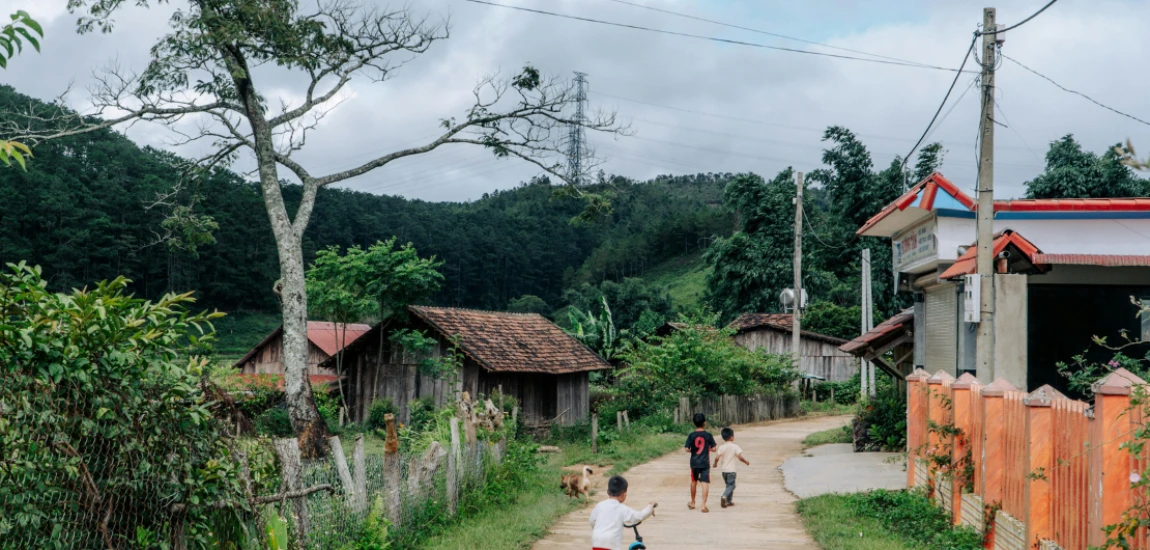Villages With Only One Road In and Out: Hidden Gems Off the Beaten Path

In most modern towns and cities, roads are abundant. Highways crisscross landscapes, offering multiple choices for entering or leaving a place. But then there are the exceptions—villages with only one road in and out. These places exist in pockets of the world where geography, history, or intentional design have limited access to a single route.
Why does this matter? Because the presence of just one road shapes everything about the life of a village. It influences trade, tourism, culture, and even the psychology of residents. With only one way in and out, outsiders can’t simply pass through—visiting these villages requires deliberate intention. That sense of effort creates both challenges and unique charms.
For locals, the single road often means resilience. Communities must be resourceful, prepared for supply limitations, weather disruptions, and minimal outside influence. For visitors, it heightens the sense of adventure. There’s something symbolic about traveling a lone road and realizing that at the end of it lies a place preserved by isolation.
In this blog, we’ll journey through some of the world’s most fascinating villages accessible by only one road. From the car-free charm of Gimmelwald in Switzerland to the whimsical design of Portmeirion in Wales, the tribal isolation of Supai in Arizona, the windswept cliffs of Gasadalur in the Faroe Islands, and the medieval fortress of Monemvasia in Greece—each offers a story that proves sometimes less access means more authenticity.
Gimmelwald, Switzerland: A Car-Free Haven
High in the Bernese Oberland region of Switzerland lies Gimmelwald, a village perched on the edge of steep alpine cliffs. Unlike its more famous neighbors—Mürren and Wengen—Gimmelwald has resisted commercialization. This resistance is partly due to its limited access, as it is connected by only a single road, winding narrowly up the mountainside. The alternative is a cable car, which adds to the sense of remoteness.
What makes Gimmelwald extraordinary is its car-free lifestyle. Visitors can’t drive into the village; instead, they arrive on foot, by bus to the nearby stop, or via the Schilthornbahn cable car. The absence of traffic and modern noise makes Gimmelwald feel like a step back in time. Wooden chalets adorned with flowers line the single road, and cows graze peacefully in alpine meadows.
The single road has shaped the village’s identity. Supplies must be delivered in careful shipments, and the lack of through-traffic prevents the village from being overrun by mass tourism. This has preserved the authenticity of its culture and farming traditions. Travelers staying in Gimmelwald will notice the strong sense of community. Locals are quick to share stories of their families, some of whom have lived here for generations.
For adventurers, Gimmelwald is also a gateway to spectacular hiking trails. Paths lead to alpine meadows, waterfalls, and panoramic viewpoints across the Lauterbrunnen Valley. But the beauty lies not just in the scenery; it’s in the journey. To arrive at Gimmelwald means deliberately choosing the single road—or cableway—that carries you into a slower, simpler pace of life.
Travel tip: Stay at the Mountain Hostel or a family-run guesthouse. At night, when the last hikers leave, you’ll experience a stillness rare in Europe—made possible by the fact that there is, quite literally, only one way in and one way out.

Portmeirion, Wales: A Village of Whimsy
On the coast of North Wales lies Portmeirion, a village unlike any other in Britain. Created by visionary architect Sir Clough Williams-Ellis between 1925 and 1973, Portmeirion was designed as a whimsical seaside retreat inspired by Mediterranean architecture. With its pastel-colored buildings, domes, and piazzas, it looks more like Italy’s Amalfi Coast than the rugged Welsh shoreline.
What makes Portmeirion fit into the category of villages with only one road in and out is its controlled access. Visitors enter through a single gate along a winding coastal road. This intentional design enhances the sense of stepping into a completely different world. Once inside, there are no alternative routes—just winding pedestrian lanes that keep the magic intact.
The single road and entrance reinforce the village’s uniqueness. Because entry is limited and carefully managed, the village maintains an exclusive, almost theatrical atmosphere. Visitors often describe it as walking into a stage set or a dreamscape. Indeed, its surreal charm has been captured on film—most famously as the backdrop for the cult 1960s television series The Prisoner.
For locals and workers, the road controls the flow of life. Deliveries, supplies, and services all funnel through the same entrance, creating a self-contained rhythm. For tourists, this restriction ensures the village never loses its sense of mystery. Once the gates close at night, Portmeirion becomes even more enchanting, with only overnight guests able to wander its lantern-lit streets.
Travel tip: Plan to stay overnight in one of Portmeirion’s quirky hotels or cottages. Experiencing the village after hours, without crowds, allows you to appreciate how its one-road access fosters both seclusion and intimacy.

Supai, Arizona: The Road That Ends in a Trail
In the heart of the Grand Canyon lies Supai, one of the most isolated villages in the United States. Officially the home of the Havasupai Tribe, Supai is unique because it cannot be reached by conventional roads at all. Instead, visitors must hike 8 miles along a rugged trail—or arrive by mule or helicopter. In spirit, however, it is very much a “one road in, one road out” kind of place, with that one path serving as the village’s lifeline.
Supai’s isolation has preserved not only its culture but also its breathtaking natural surroundings. The turquoise waters of Havasu Falls, Mooney Falls, and Beaver Falls draw adventurers from around the world. Yet reaching them requires effort, as every step into Supai is part of the same return journey out.
For residents, life revolves around the limitations of access. Mail is famously delivered by mule, making it the last place in the U.S. with such a service. Supplies must be flown or carried in, and weather conditions can quickly cut off connections to the outside world. This isolation fosters resilience and a deep connection to tradition.
For visitors, the journey is transformative. Hiking into Supai isn’t just physical—it’s symbolic of leaving modern conveniences behind and entering a world shaped by isolation. The single trail forces you to slow down, carry only what you need, and appreciate the privilege of being welcomed onto tribal land.
Travel tip: Permits are required, and spots are limited, so book well in advance. Respect tribal rules, prepare with plenty of water, and understand that the village’s seclusion is part of what makes it so special. The “one road” to Supai may be tough, but the waterfalls at the end make it unforgettable.

Gasadalur, Faroe Islands: Once Hidden, Still Remote
On Vágar Island in the Faroe Islands lies Gasadalur, a village that epitomizes remoteness. Until 2004, the only way to reach Gasadalur was by climbing over a steep mountain path or arriving by boat. That changed when a single-lane tunnel was carved through the mountain, connecting the village to the outside world. To this day, that tunnel remains the only road in and out of Gasadalur.
This isolation shaped Gasadalur’s history. For centuries, its small population struggled with depopulation as young people left in search of easier lives elsewhere. The difficulty of access made farming and fishing—the village’s main livelihoods—especially tough. Yet the people who remained developed a resilience tied to the dramatic landscape around them.
Today, Gasadalur is most famous for its postcard-perfect view of Múlafossur Waterfall, which tumbles into the Atlantic Ocean. Tourists flock to see the scene, yet the single-road tunnel limits the flow of visitors, preserving the village’s peace. Even with increased access, Gasadalur retains its aura of being a hidden world at the edge of Europe.
For travelers, visiting Gasadalur offers a glimpse into life in extreme conditions. The road in symbolizes more than access; it represents survival and the determination of a community to remain connected without losing its identity.
Travel tip: Weather in the Faroe Islands is unpredictable, so plan flexibly. Gasadalur is best experienced at quieter times of day when you can appreciate the silence broken only by waves and birds. The drive through the one-road tunnel itself feels like a passage into another world.

Monemvasia, Greece: A Medieval Fortress With One Gate
Off the coast of the Peloponnese lies Monemvasia, a medieval fortress town that seems frozen in time. The name itself comes from the Greek mone emvasia, meaning “single entrance,” and true to its name, Monemvasia has only one narrow causeway road linking it to the mainland.
Founded in the 6th century, Monemvasia was carved directly into the rock to defend against invasions. Its fortress walls and strategic single entrance made it nearly impenetrable. Over the centuries, it became a flourishing Byzantine town, rich with churches, mansions, and trade.
Today, walking through the gate feels like stepping into a storybook. Cobblestone alleys, Byzantine churches, and stone houses wind through the village, while the cliffside location offers breathtaking views of the sea. The limited road access ensures that Monemvasia remains one of Greece’s most atmospheric destinations, free from the chaos of modern development.
For locals, the one road has always been both a strength and a limitation. It protected the town from invaders, yet it also made life dependent on the sea and trade connections. For modern visitors, it creates a sense of exclusivity—you can’t stumble upon Monemvasia; you must seek it out intentionally.
Travel tip: Stay overnight in one of the boutique hotels within the fortress walls. When the day visitors leave, the magic of Monemvasia truly reveals itself. The quiet streets under the stars feel almost unchanged since medieval times, reminding you that the single road in is also the single road back out.

Practical Tips for Visiting Villages With Only One Road
Exploring villages with only one road in and out requires a different mindset from traditional travel. Here are some tips to make the most of it:
Check access in advance: Weather, seasonal closures, or local restrictions may affect travel on the only available route.
Support locals: Small, isolated communities often rely heavily on tourism. Eat local, stay local, and shop local to give back.
Travel light and prepared: With limited supplies in these villages, bring essentials like water, snacks, and medication.
Embrace slowness: These journeys aren’t about rushing—they’re about appreciating the uniqueness of places shaped by isolation.
Respect traditions: Remember, these are not just pretty backdrops but living communities. Show cultural sensitivity and gratitude.




